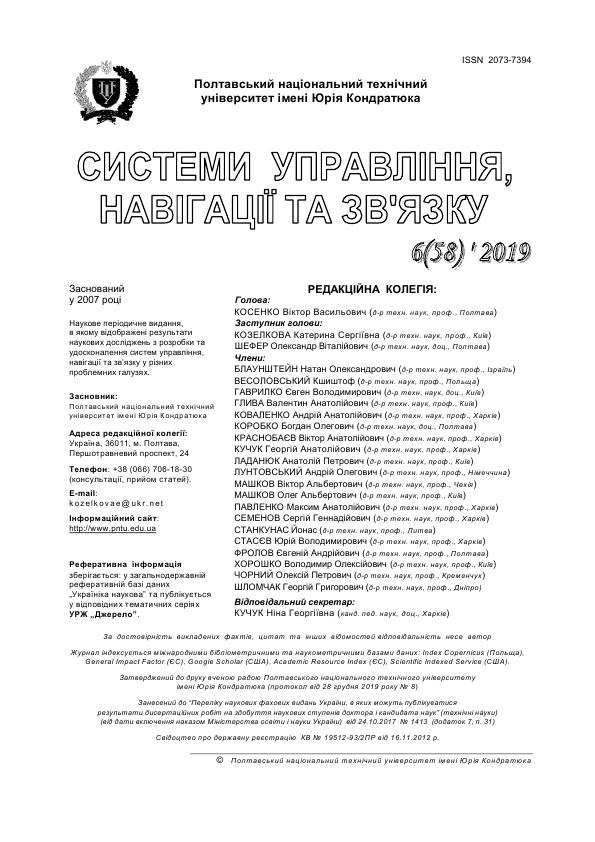МЕТОД ДЕКОДУВАННЯ МОЗАЇЧНОГО СТОХАСТИЧНОГО МАРКЕРА ДОПОВНЕНОЇ РЕАЛЬНОСТІ
DOI:
https://doi.org/10.26906/SUNZ.2019.6.054Ключові слова:
маркер, код, доповнена реальність, віртуальна реальність, моделі, методи, вимоги, зовнішній вплив, робастність, виявлення, декодуванняАнотація
Предметом вивчення в статті є маркери доповненої реальності. Метою є розробка методу декодування мозаїчного стохастичного маркера доповненої реальності. Завдання: аналіз основних операцій у маркерних системах доповненої реальності, аналіз основних існуючих типів AR-маркерів, розробка методу декодування мозаїчного стохастичного маркера доповненої реальності. Використовуваними методами є: методи цифрової обробки зображень, теорії ймовірності, математичної статистики, криптографії та захисту інформації, математичний апарат теорії матриць. Отримані такі результати. Визначено, що однією з основних операцій у маркерних системах доповненої реальності є декодування маркерів у відео-потоці з метою вирізнення віртуальних об'єктів з реального світу. Розроблений метод декодування мозаїчного стохастичного маркера доповненої реальності. Висновки. Вперше отримано метод декодування мозаїчного стохастичного маркера доповненої реальності, який на підставі запропонованої системи показників визначає розміри матриці бітів маркера, із трансформованого зображення бітконтейнера будує матрицю бітів маркера, визначає зсув у повній матриці бітів, на основі застосування зворотньої перестановки до повної матриці бітів реалізує фільтрацію пермутованого зображення. Напрямками подальших досліджень є розробка методу проектування віртуальних об’єктів на площину маркеру доповненої реальності; розробка інформаційної технології використання мозаїчних стохастичних маркерів у системах доповненої реальностіЗавантаження
Посилання
Facebook Research. AR/VR-Facebook Research. 2019 // [Electronic resource] – URL: https://research.fb.com/category/augmented-reality-virtual-reality.
Siltanen, Theory and applications of marker-based augmented reality / S.Siltanen // Espoo 2012 – 2012. – 198 p.
Маковейчук О. М. Новий тип маркерів доповненої реальності / О. М. Маковейчук // Сучасні інформаційні системи. — 2019. — Том. 3. – No 3. – С. 43–48.
Lowe, David G. Object recognition from local scale-invariant features. //Proceedings of the International Conference on Computer Vision 2 – 1999 – P. 1150–1157.
Форсайт А.Д., Компьютерное зрение. Современный подход / Форсайт А. Д., Понс Ж. // Компьютерное зрение. Современный подход. – 2004. – 928 с.
Hartley R., Multiple View Geometry in Computer Vision / Hartley R., Zisserman S. // Cambridge University Press New York, NY, USA – 2003. – 655 p.
Маковейчук О. М. Використання генетичних алгоритмів для знаходження інверсних псевдовипадкових блочних перестановок / О. М. Маковейчук, І. В. Рубан, Г. В. Худов // Системи управління, навігації та зв’язку. — 2019. — No 4 (56).
Adobe Blog. The 10 VR Trends We’ll See in 2018, 2019 // [Electronic resource] – URL: https://theblog.adobe.com/10-vrtrends-well-see-2018/.




